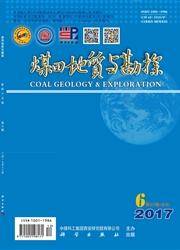

 中文摘要:
中文摘要:
通过对潞安矿区区域地质背景研究,在镜质体反射率测试分析的基础上,对研究区多个井田含煤地层的埋藏史及其热史进行了恢复。结果表明,早三叠世—侏罗纪,研究区构造运动强烈,埋深增大至3500m左右,经历较高古地温(120~135℃),热流达到第一个峰值(76~89mW/m2);侏罗纪晚期—早白垩世,受燕山期火山运动及深层侵入岩影响,研究区含煤地层温度骤升至160~180℃并伴随出第二个古热流峰值(90~99mW/m2)。通过比对,认为沁水盆地东南缘潞安矿区所处构造–热演化程度较沁水盆地中部偏高。
 英文摘要:
英文摘要:
Through studying the geological background of Lu’an mining area, we recovered the burial and thermal history of the coal-bearing strata of multiple coal mines in the study on the basis on testing and analyzing the vitrinite reflectance. The result shows that from Early Triassic to Jurassic Period, burial depth in the study area increased to around 3 500 meters because of the strongly tectonic movement. The study area went through relative high paleogeotherm, 120~135℃, and heat flux reached the first peak value, 76~89 mW/m2. Then from Late Jurassic to Early Cretaceous Period, the mine lot was influenced by the strongly tectonic movement again, experienced high paleogeotherm, 160~180℃and second palae-heat flux peak, 90~99 mW/m2. In comparison, we conclude that the tectonic-thermal evolution degree in the southeast edge of Qinshui basin is higher than that in the center of Qinshui basin.
 同期刊论文项目
同期刊论文项目
 同项目期刊论文
同项目期刊论文
 期刊信息
期刊信息
